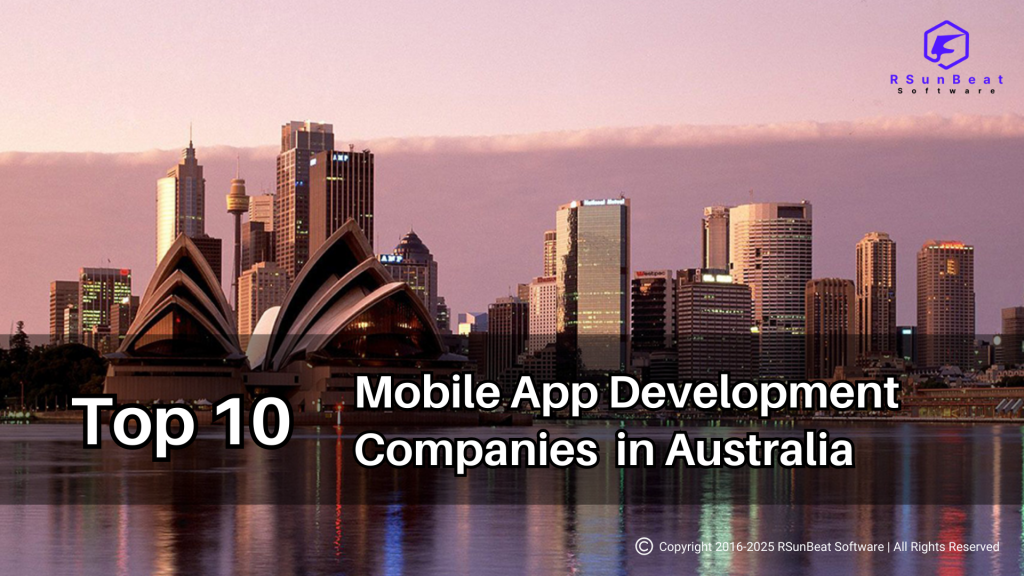
How to Build Custom Logistics Software with Accounting Features in 2025–26
Introduction: The Digital Transformation of Logistics & Accounting
In 2025–26, logistics and transportation are no longer about moving goods — they’re about moving data efficiently.
From fleet management to tax reporting, every part of the supply chain now relies on digital infrastructure and automation.
But there’s one pain point that still plagues logistics businesses worldwide: disconnected systems. Many organizations still manage their operations on one platform and their finances on another — leading to manual errors, duplicate data, and compliance delays.
That’s why logistics enterprises are now embracing custom logistics software with built-in accounting features — similar to QuickBooks, but fully tailored to their workflows.
These unified systems combine dispatch management, route optimization, billing, and accounting automation, helping logistics companies save time, reduce costs, and achieve full operational transparency.
📊 According to Statista, the global logistics software market is expected to reach over $18 billion by 2026, driven by automation, AI-based analytics, and integrated financial systems.
If your logistics business still toggles between spreadsheets, TMS, and QuickBooks, it’s time to consider an all-in-one, custom-built logistics accounting platform.
Step 1:
Requirement Analysis — Laying the Foundation
Every successful software project begins with clarity. Before development starts, you need to define what your logistics business truly needs.
Key focus areas:
Fleet tracking & dispatch scheduling — Manage vehicles, routes, and deliveries in real-time.
Route optimization — AI-based route recommendations for fuel and time efficiency.
Billing & invoicing automation — Generate invoices directly from completed deliveries.
Expense monitoring — Track maintenance, tolls, fuel, and driver expenses.
Driver payroll automation — Simplify wage calculations and on-time disbursements.
Regulatory compliance — Ensure VAT/GST alignment across regions.
During this phase, your software partner should conduct business requirement workshops with logistics managers, accountants, and IT heads to define:
Core functionalities
Integration scope (TMS, CRM, ERP, IoT)
Reporting needs and KPIs
Scalability roadmap
✅ Tip: Align all requirements with your growth vision — not just current operations. A scalable architecture ensures your system evolves as your fleet and clients grow.
Step 2:
Feature Planning — Designing the Core Capabilities
Once the requirements are mapped, the next step is defining what features your software must include to deliver tangible business value.
Must-Have Features for Logistics & Accounting Integration:
1. Accounting Dashboard
A real-time overview of revenue, expenses, profit/loss, accounts payable, and receivable — accessible anytime.
2. Multi-Currency Invoicing
For global logistics providers, seamless cross-border billing with automated currency conversion and localization.
3. Automated Expense Tracking
Automatically capture costs from delivery logs, fuel cards, and sensor data to maintain expense accuracy.
4. Driver Payment Management
Integrate payroll automation to calculate driver wages, bonuses, and fuel reimbursements — reducing admin effort.
5. Real-Time Fuel Cost Calculation
Leverage IoT-enabled sensors to sync live fuel usage with route data for precise cost management.
6. Tax Compliance Automation
Built-in VAT/GST calculators for multi-region compliance (UAE, UK, India, Germany, etc.) with automated tax return preparation.
7. Financial Reporting & Forecasting
Customizable dashboards and KPI-based analytics to support data-driven decision-making.
Step 3:
UI/UX & System Design — Crafting the Experience
Good logistics software doesn’t just function well — it’s intuitive for users across departments.
Design Best Practices:
Role-Based Dashboards: Separate interfaces for logistics managers, accountants, and drivers.
Responsive Design: Optimized for web and mobile (ideal for drivers and dispatchers).
Data Visualization: Graphs and KPIs for fleet utilization, expenses, and profit margins.
Simplified Navigation: Fast access to daily reports, invoices, and trip data.
Color-Coded Alerts: Highlight delays, low balance, or compliance flags.
User-Centric Development
Early-stage user testing and feedback loops ensure the interface matches real-world workflows — minimizing retraining and improving adoption.
🧭 Pro Tip: Prioritize “speed to insight.” The faster your team can interpret data from dashboards, the faster decisions can be made.
Step 4:
Development Phase — Building the Engine
Here’s where strategy turns into code. The development stage is where your vision becomes a fully functional logistics and accounting platform.
Recommended Tech Stack for 2025–26:
| Layer | Technology | Purpose |
|---|---|---|
| Frontend | React.js / Angular | Intuitive, responsive user interfaces |
| Backend | Node.js / Python (Django/FastAPI) | Robust APIs and data handling |
| Database | PostgreSQL / MongoDB | Scalable data storage and queries |
| Cloud Infrastructure | AWS / Azure / Google Cloud | Hosting, scalability, and resilience |
| Integrations | RESTful APIs / GraphQL | CRM, ERP, Banking, IoT connectivity |
| AI Components | TensorFlow / PyTorch | Predictive route optimization, analytics |
| Authentication | OAuth2 / JWT | Secure multi-role access management |
Core Development Priorities:
Modular Architecture (Microservices): Enables independent scaling of logistics, accounting, and analytics modules.
AI-Driven Automation: Smart dispatching, cost forecasting, and anomaly detection.
Real-Time Sync: APIs ensure instant data exchange between logistics and accounting workflows.
Security First: End-to-end encryption, secure login, and compliance with GDPR and SOC2.
🧠 Example: A custom-built dispatch system can automatically log trip details, calculate costs, and push data to the accounting ledger — eliminating human errors.
Step 5:
Integration with CRMs, ERPs & IoT
Integration is where true efficiency happens. Your logistics software must seamlessly communicate with your existing business systems.
Common Integrations Include:
CRM Systems (HubSpot, Salesforce): For managing customer data, contracts, and invoicing.
ERP Systems (SAP, Odoo, Oracle): Sync purchase orders, supply chain data, and inventory updates.
IoT Devices: Real-time vehicle location, temperature monitoring, and fuel analytics.
Payment Gateways: Enable digital payments and automated reconciliation.
Banking APIs: Fetch transaction data for automated cash flow visibility.
APIs and webhooks serve as the communication bridge, ensuring instant data synchronization between modules.
Example: When a delivery completes, the CRM updates the customer record, while the accounting system automatically generates an invoice — no human input required.
Step 6:
Testing & Deployment — Ensuring Reliability
Once developed, your system undergoes rigorous testing to ensure flawless operation before it goes live.
Key Testing Types:
Functional Testing: Verifies each feature works as intended.
Integration Testing: Ensures data flows correctly between logistics, accounting, and third-party systems.
Performance Testing: Tests system behavior under heavy load (e.g., 100+ concurrent route updates).
Security Testing: Protects sensitive financial data against breaches.
User Acceptance Testing (UAT): Validates the system meets real-world expectations.
Deployment Best Practices:
Use CI/CD pipelines (Continuous Integration/Continuous Deployment) for faster updates.
Host on cloud infrastructure (AWS/Azure) with scalability options.
Employ containerization (Docker/Kubernetes) for modular deployment.
Conduct pilot launches in select departments before full-scale rollout.
🧩 Tip: Automate backups and use a rollback mechanism — it’s vital for mission-critical logistics operations.
Step 7:
Post-Launch Support & Continuous Optimization
Building the platform is only the beginning. Continuous improvement ensures your logistics system stays aligned with market and regulatory changes.
Post-Launch Services:
Tax & Compliance Updates: Regular updates for evolving GST/VAT or e-invoicing laws.
Feature Enhancements: Add new analytics, dashboards, or integration points.
AI Model Tuning: Refine prediction accuracy for routes and cost forecasting.
Security Patching: Continuous vulnerability scanning and compliance checks (GDPR, ISO 27001).
User Training: Onboarding sessions for finance and operations teams.
Proactive optimization ensures the software delivers long-term ROI and maintains efficiency as your business scales.
Step 8:
Cost & ROI Considerations
Building custom logistics software requires strategic investment, but the returns are substantial — both in cost savings and efficiency.
| Cost Component | Typical Range (USD) | Notes |
|---|---|---|
| Discovery & Design | $10,000 – $30,000 | Requirement analysis & UI/UX design |
| Development & Integration | $40,000 – $120,000 | Varies by complexity & features |
| Testing & QA | $10,000 – $20,000 | Multi-environment testing |
| Cloud & Deployment | $5,000 – $15,000 | Hosting, CI/CD setup |
| Ongoing Support | $1,000 – $5,000/month | Maintenance, updates, optimization |
ROI Insight:
Companies adopting integrated logistics-accounting software report:
Up to 30% cost reduction in administrative operations
2x faster financial reporting
Improved profitability tracking per route/vehicle
Higher driver retention due to automated payroll and transparency
Step 9:
The Future of Logistics Accounting Software (2025–26 & Beyond)
The next wave of logistics software innovation will focus on hyper-automation and predictive intelligence.
Key Trends Ahead:
AI-driven route and cost forecasting for better budgeting.
Blockchain-powered transparency for delivery verification and digital payments.
Digital twins for real-time simulation of fleet performance.
Voice and chat-based financial assistants for instant status queries.
Integrated carbon footprint tracking to support ESG compliance.
The combination of smart logistics systems + embedded accounting intelligence will define the next decade of supply chain success.
Conclusion:
Build It Smart. Build It Custom.
As logistics operations grow more complex, the tools that power them must evolve, too.
A custom-built logistics platform with integrated accounting features isn’t just software — it’s a strategic foundation for growth.
It enables complete visibility — from fuel spend to profit margins — while automating compliance, billing, and forecasting.
🚀 In 2025–26, the most competitive logistics companies will be the ones that connect operations with finance — seamlessly, intelligently, and globally.
Ready to build your logistics software that works like QuickBooks — but smarter and fully customized for your business?
👉 Book a free consultation today to discuss your requirements and receive a personalized development roadmap.
Testimonials ~
What Our Clients
Are Saying
Your trust drives our passion. Here’s how we’ve helped businesses like yours thrive with tailored solutions and unmatched support.
Our Technology Experts
Are Change Catalysts
Mail to Our Sales Department
info@rsunbeatsoftware.com
Our Skype Id
Rsunbeat Software


